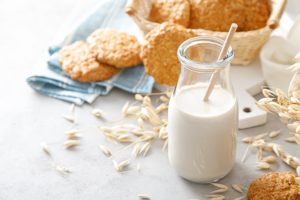What’s the Confusion About?
Does food ‘taste’ good? Or does it have a good ‘flavour’? Are they both the same thing? Is pasta that tastes spicy any different from one with a similar flavour? Indeed, what is the difference between taste and flavour?
There’s uncertainty over these two terms and their meaning, even being used interchangeably often. We’ll break down their differences and go into the technical nuances that distinguish them. Discover how each applies to foods and what makes them so essential to kitchens everywhere.
What is Taste?

Taste is the result of a series of complex reactions occurring in the mouth, beginning with the interaction between chemical compounds in food and the tongue. During the process, the activation of nerve cells sends information to the brain on what taste to perceive while eating something.
This leads to the question: How many types of tastes are there?
The five types of taste are sweet, sour, salty, bitter, and umami—each realised thanks to how the tongue and the central nervous system work!
What is Flavour?

While taste is a singular element, flavour is a combination of taste itself and aroma. But what are flavours exactly? The flavour is the overall sensory experience of eating or drinking, influenced not only by taste and aroma but also by factors such as texture, temperature, and even visual appearance.We’ve covered taste, but what is aroma exactly? It’s the smell component of food that registers when volatile organic compounds in foods react with the brain. Aroma is responsible for a large part of flavour outside the five tastes.
In fact, foods can seem flavourful with aroma alone. Some foods that don’t have any ‘taste’ can be perceived to taste a certain way because of the association the brain makes between the food’s smell and the way it ought to taste. This is why vanilla ice cream has a sweet taste, despite vanilla not having an actual taste—a bit of brain trickery!
Flavour isn’t an easy thing to accomplish. That’s why a flavour manufacturer like Symega can help manufacturers get the best flavours out of their products with their expertise in taste and aroma!
The Key Differences Between Taste and Flavour
Now that we’ve distinguished taste and flavour fundamentally, let’s break the differences down further. Firstly, taste is a physiological process, while flavour is physiological and psychological. Taste is limited to five sensations. Flavour, on the other hand, combines taste and smell and even texture and temperature. Different flavour can be achieved by adjusting various elements, turning—for example—an ordinary stew into a spicy and rich ragout!
The difference between taste and flavour might not be a lot, but knowing it can help incorporate subtle changes that make dishes so much better.
Taste and Flavour in Everyday Foods
We encounter taste and flavour in several ways. A simple illustration of the interplay between the two is some chips. The salty/umami taste is what’s detected by the tastebuds. The overall flavour, however, is dictated by these tastes, the crispiness of the chips, and the appetising aroma. These individual elements all add depth and complexity to the flavour profile. Other common examples of flavour and taste in everyday life? Cooked rice, where the aroma shapes the flavour mainly. And lemons, which are driven by their sour taste.
A Complete Sensory Experience
Knowing the difference between taste and flavour could help manufacturers craft products with heightened appeal, giving consumers a complete sensory experience. Food ingredients suppliers and savoury blends manufacturers can offer culinary solutions for manufacturers seeking to elevate their products. Enhancing flavour through the proper application of spices, marinades, seasonings, and other additions is guaranteed to draw attention from increasingly demanding consumers.
FAQs
Taste occurs in the mouth and involves a series of reactions on the tongue that send taste perception information to the brain. It tells us if food is sweet, sour, salty, bitter, or umami. A flavour is a combination of taste and aroma. Flavour profile can also be described by the texture of food and is the overall sensation one has while eating or drinking.
Yes, since aroma is a huge component of flavour. Foods that don’t have any ‘taste’ can be perceived to taste a certain way because of the association the brain makes between the food’s smell and the way it ought to taste.
Smell influences how we perceive taste and tells us about the overall flavour of food, so a cold blocks our ability to judge odour and is why food feels bland.
Flavour can be enhanced by using ingredients that affect the taste. There are various ways to do this—from marinades to spices to quality sauces and gravies. Other techniques like caramelisation, poaching, and high-temperature cooking also lead to more robust flavours. And adding acids, zest, and butter makes dishes taste and smell better depending on the food.




